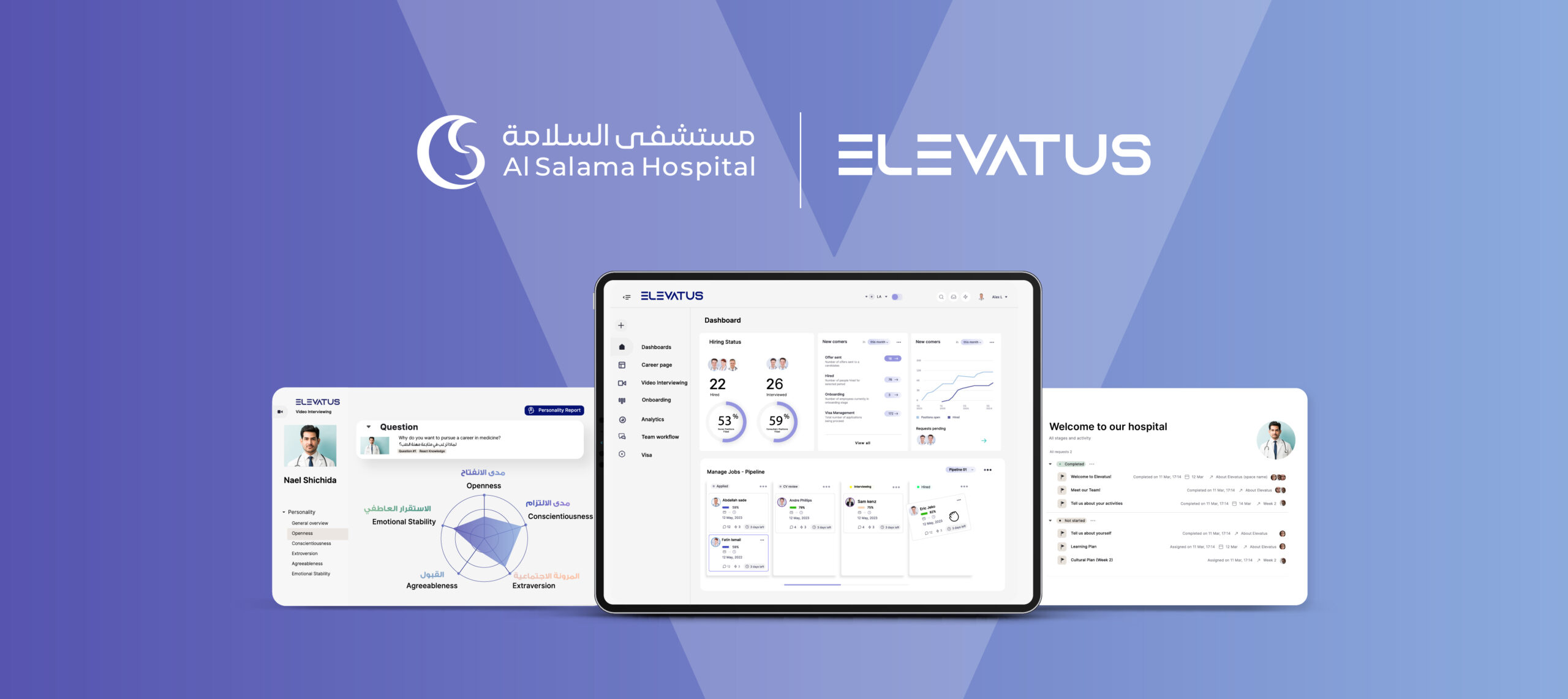
Hiring Platform
Talent Pipeline: 3 Steps to Build the Most Efficient Pipeline
August 8, 2022
Reem Al-Tamimi
Content Writer
There are noticeable shifts in how candidates interact with companies and apply for jobs. Likewise, companies are now more proactive with talent acquisition methods.
Building a proactive approach to talent acquisition and an effective talent pipeline – is also on the to-do list of every recruiter and hiring manager.
While this will make it easy to fill job positions when required, the steps of building a pipeline are far from simple. But do not be dismayed! Today, we will discuss how to create effective pipelines using an advanced ATS like EVA-REC.
Before we get to that, let’s find out what a talent pipeline means and its benefits for you as a recruiter.
What is a talent pipeline?
Imagine having a pool of talented individuals who have already expressed their interest in working for your company, just waiting to dive into the perfect role when it becomes available. That’s what a talent pipeline is all about! These passive candidates have already engaged with your company in the past and could be a valuable asset to your team in the future.
Many recruiters and hiring managers who use this strategy will refer to it as a “relationship-centered” method of talent acquisition strategy. Think of a talent pipeline as a proactive approach to recruiting, where instead of scrambling to find suitable candidates for immediate job openings, your company already has a pool of potential candidates who have shown interest in working for you. By cultivating relationships with passive talents, you shift from a reactive to a proactive hiring strategy. You’re no longer simply looking to fill vacancies, but rather, you’re anticipating the future talent needs of your company. Sure, developing a talent pipeline takes time and effort, but the long-term benefits are worth it. So invest in your future by investing in your talent pipeline!
Why do you need a talent pipeline?
Having an active talent pipeline can be a game-changer for any company. Not only does it relieve the burden on hiring managers and recruiters of constantly seeking new candidates, but it can also drastically reduce the time-to-hire for open positions. Companies that adopt a proactive approach to recruiting top talent stand to gain exceptional benefits that can give them a competitive edge in the market. Let’s take a closer look at some of the advantages:


More qualified candidates
Talent acquisition specialists looking to recruit the best candidates can be somewhat of a tussle. However, building an effective pipeline ahead of time helps recruiters dip into a talent pool that is already brimming with qualified candidates. This will help them avoid rushing to find candidates for immediate needs.
A talent pipeline empowers recruiters with a clear understanding of their candidates well in advance. When a new hiring goal is established, recruiters can anticipate the number and caliber of candidates they need to bring on board. Additionally, by cultivating talent within the pipeline, recruiters can keep tabs on the candidates’ skills development and progression, gaining valuable insights into their potential for future roles.
A competitive edge
In today’s job market, organizations are fiercely vying for the top talent available, and it’s not an easy feat. While active job seekers are on the hunt for new job postings, passive candidates are often overlooked. These individuals aren’t actively seeking new employment opportunities, which means they may not engage with your job postings.
However, by effectively nurturing passive talent through a talent pipeline, you gain a competitive edge in the race to attract the best candidates. Building relationships with potential candidates ahead of time allows you to identify and engage with them without the pressure of a specific job opening. By introducing the possibility of future roles that align with their skills and interests, you’ll pique their interest and improve your chances of getting a positive response. So, by investing in a talent pipeline, you can attract the best talent faster and gain a strategic advantage over your competitors.
A world-class candidate with experience
Building great communication lines with candidates is the pillar of a superb candidate experience. Creating a talent pipeline means developing an engaging relationship with candidates. This will help you ramp up the candidate experience exponentially.
It’s important to keep in mind that candidates tend to remember their experiences, both positive and negative, throughout the recruitment process. To enhance your employer branding and stand out from the competition, it’s essential to create a positive and memorable candidate experience. By doing so, you can attract passive candidates effortlessly without having to go through the hassle of active recruitment. Make every step of the recruitment process a pleasant one, and candidates will remember your company as a great place to work, spreading the word to others and enhancing your reputation in the market.
How to build a great pipeline for talent


Now that you are familiar with what a talent pipeline is and its benefits for easy talent acquisition. It is time to take these steps to build a successful one.
Evaluate candidate persona
The foundation of building a talent pipeline is to identify your targets. You have to set a clear picture of who you are going after. The point of developing one is to help your company engage with the right talent and not just all candidates.
Assessing candidate personas is crucial to ensure you’re dedicating your time, budget, and resources to the right candidates. By understanding the demographics, work history, experience, goals, motivations, and interests of potential candidates, you can tailor your recruitment strategies accordingly. You can gather this information through surveys or by analyzing data from successful employees, executives, and existing candidates. By doing so, you can gain valuable insights and create effective hiring campaigns that resonate with your target audience.
Fill your pipeline
Now that you’ve established the foundation for the type of talent you’re seeking, what’s the next step? It’s time to fill your pipeline with relevant candidates that meet your requirements. Bear in mind that filling your pipeline is a recurring activity. This is where advanced applicant tracking systems come into play by helping you identify, track, and stay connected with top candidates. When finding passive talents, you can focus on re-engaging candidates who have shown significant interest in your company in the past. So, you can create more awareness by advertising your jobs to drive applications or by sourcing candidates on the right job boards.
Engage your pipeline
For your talent pipeline to be powerful, you need to invest in the nurturing of top talent. This will help you build stronger connections and relationships with them. Nurturing candidates is a long-term investment and the key to a successful pipeline. The candidate persona you’ve established can guide you on how to engage with potential candidates effectively without overwhelming them with messages. By segmenting candidates based on their interests and their existing relationship with your company, you can tailor your communication to their specific needs and preferences.
A talent pipeline is a long-term process. To have a successful one, you have to make sure you are engaging candidates. Also, you need to ensure that you’re helping them to move through the process in a timely fashion.


Conclusion
Think of your talent pipeline as your secret weapon in the war for talent! It’s like having your own pool of super-powered candidates just waiting for the right opportunity to join your team. By nurturing relationships with these talented individuals, you’ll be able to swoop in and snatch them up faster than the speed of light when a new role opens up!
Luckily, an ATS like EVA-REC provides you with all the resources, tools, and features you need to recruit passive and active candidates with ease.
EVA-REC is an advanced ATS that automates and improves the hiring process with AI technology. It arms leading enterprises with world-class features that help them create a rich and immersive hiring experience for recruiters and candidates alike. With EVA-REC, companies can drive merit-based, objective, and fair hiring practices that minimize bias without dehumanizing the hiring process. Request a free demo today and see how our advanced ATS can help you streamline your hiring like never before.
Turn top talent to employees fast
Hire, assess, onboard and manage top talent for every job. See how Elevatus streamlines everything; from acquire to new hire.
Request a demoAuthor
Reem Al-Tamimi
Don't miss a thing!
Stay one step ahead. Subscribe and get the latest updates, news, and insights from Elevatus straight to your inbox.







